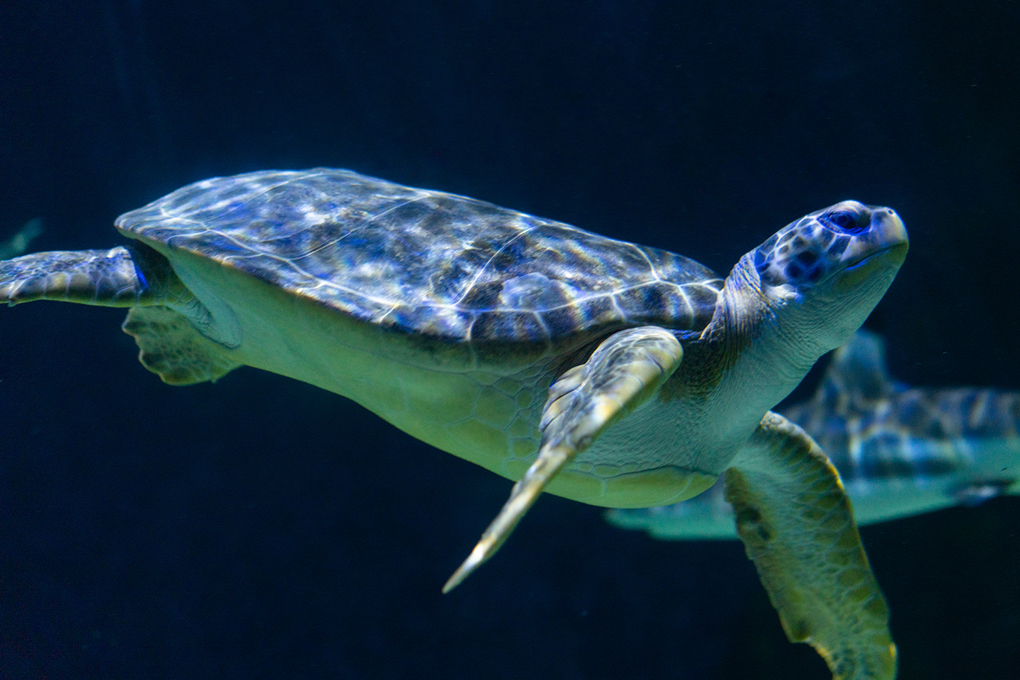There is a female green sea turtle named Green at Loveland Living Planet Aquarium. You can visit her in Ocean Explorer.
Chelonia mydas
Fast Facts
- While most species of land turtles and tortoises are able to retract their heads into their shells for added protection, sea turtles are not able to do so.
- They can hold their breath for over two hours.
- They can be found in over 140 countries and they nest in 80 different countries.
- Temperature of the turtle’s egg determines the gender.
- They can live to be over 100 years old.


Range
Tropical and subtropical oceans worldwide

Habitat
Open ocean

Size
Up to 5 feet long, weighing 145-600 pounds

Nutrition
Underwater plants and sea jellies, crabs, sponges, snails and worms
Characteristics
These turtles are not always green, but they have distinctive light edging to the scales on its head and limbs, as well as on the scutes around the edge of its shield-shaped carapace. They get their name from the green colored fat under their carapace. Female sea turtles are larger than males and males have a much longer tail than females.
Behavior
Green turtles are mostly herbivorous, feeding mostly on algae and seagrass. Juveniles tend to be more omnivorous than adults. Male sea turtles live their entire lives in the water after their initial trek on the beach after birth.
Reproduction
In order to breed, Green sea turtles must make their way to isolated sandy beaches, sometimes traveling across more than 620 miles of open sea. After mating in shallow water, the females crawl ashore and lay between 100-150 eggs in deep pits above the high-tide mark. Only the females come ashore. Male sea turtles are only out of the water once in their lives: when they are born.

